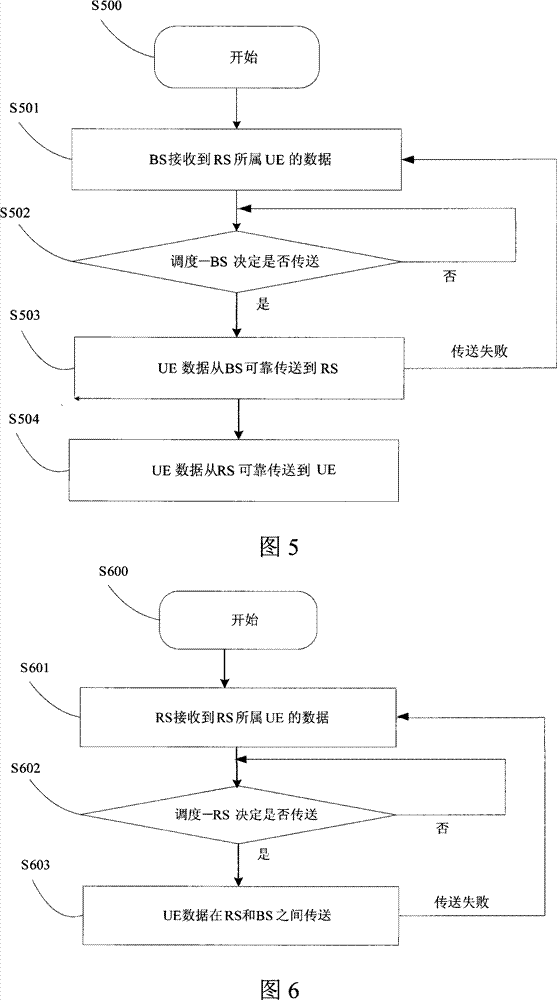Method realizing asynchronous autonomous of relay and system thereof
An asynchronous autonomous, relay station technology, applied in the direction of radio relay systems, transmission systems, digital transmission systems, etc., can solve the problems of error information retransmission twice, no feedback retransmission mechanism, etc., to avoid data delay and reduce tightness coupling effect
- Summary
- Abstract
- Description
- Claims
- Application Information
AI Technical Summary
Problems solved by technology
Method used
Image
Examples
Embodiment Construction
[0050] The purpose of the present invention is to provide a method and system for realizing the asynchronous autonomy of the relay station. The relay station in the present invention is configured as a non-transparent relay station with autonomous capability, and can realize two purposes of capacity allocation and coverage expansion. The method of the invention realizes the asynchrony of the link between the base station and the relay station and the link between the relay station RS and the user terminal UE.
[0051] For the asynchronous autonomous relay station, the so-called autonomy means that the RS has its own scheduling and can independently transmit public control information. The so-called asynchronous, such as image 3 As shown, it means that the links from BS to RS and RS to UE in the downlink direction are not established at the same time, and the links from UE to RS and RS to BS in the uplink direction are not established at the same time. RS has its own feedback...
PUM
 Login to View More
Login to View More Abstract
Description
Claims
Application Information
 Login to View More
Login to View More - R&D
- Intellectual Property
- Life Sciences
- Materials
- Tech Scout
- Unparalleled Data Quality
- Higher Quality Content
- 60% Fewer Hallucinations
Browse by: Latest US Patents, China's latest patents, Technical Efficacy Thesaurus, Application Domain, Technology Topic, Popular Technical Reports.
© 2025 PatSnap. All rights reserved.Legal|Privacy policy|Modern Slavery Act Transparency Statement|Sitemap|About US| Contact US: help@patsnap.com



